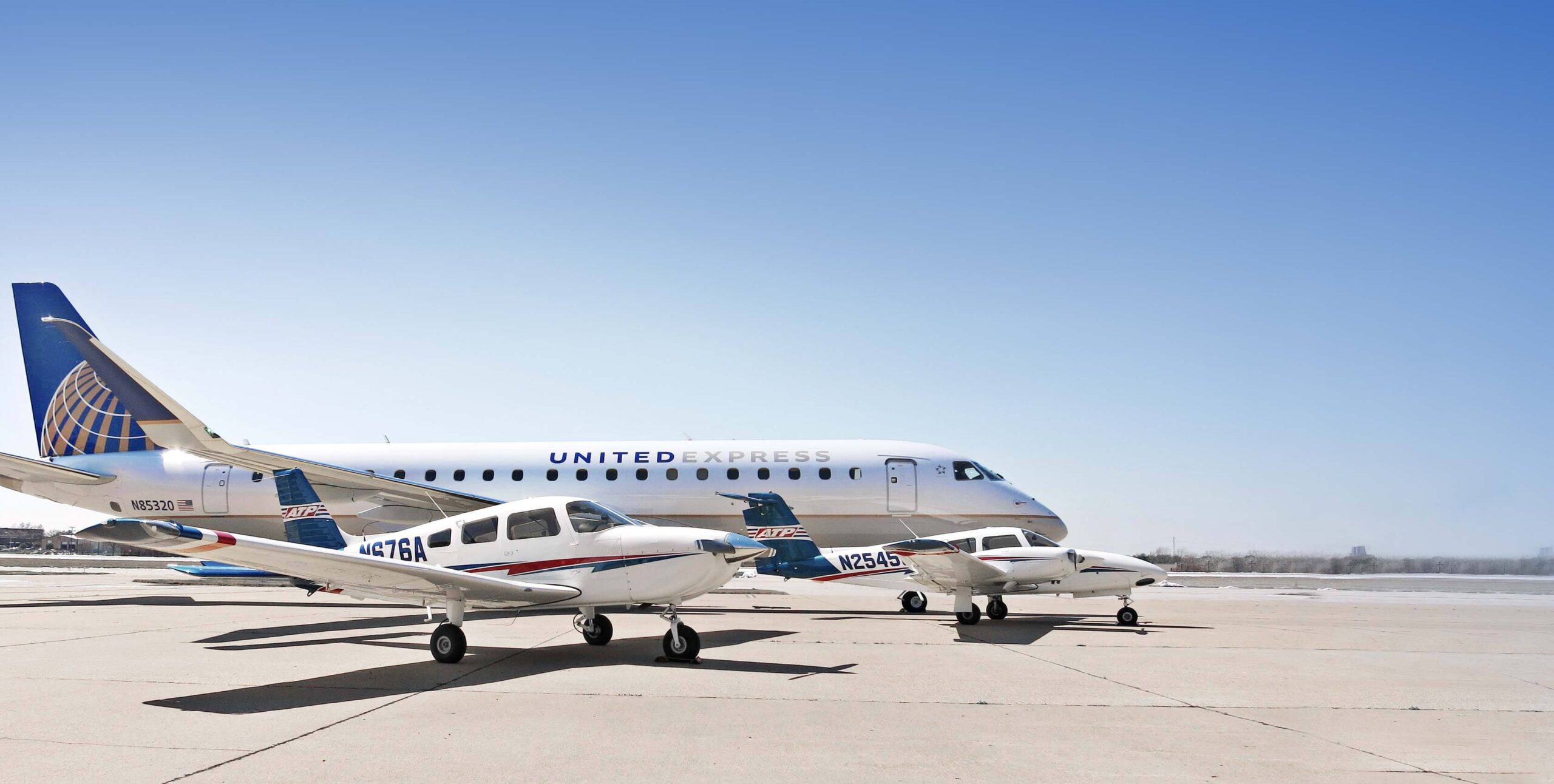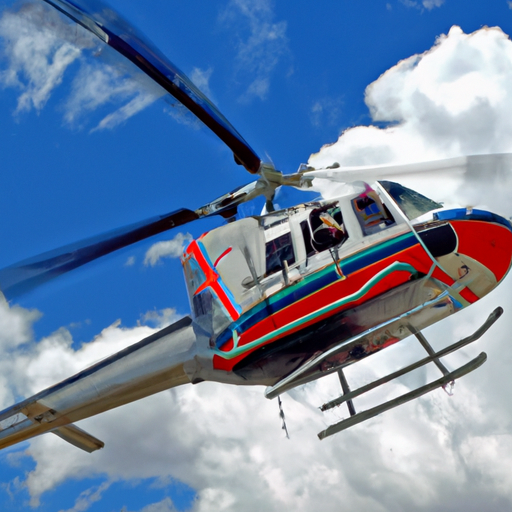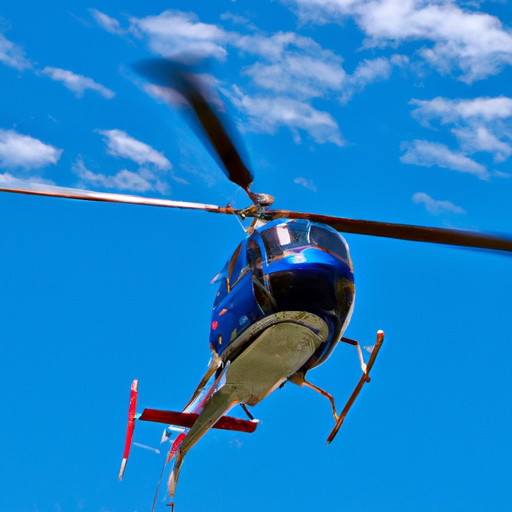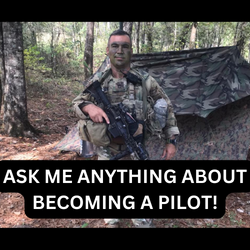
Have you ever wondered what it takes to become a helicopter pilot? Well, let me tell you, it’s quite an exciting and rewarding career path! Have you ever seen a helicopter flying through the sky and thought to yourself, “I want to do that”? Well, you’re in luck because in this article, we’re going to dive into all the details about how you can become a helicopter pilot. Trust me, by the time you finish reading this, you’ll have a clear understanding of the steps you need to take to make your dream a reality.
One of the first things you need to do on your journey to becoming a helicopter pilot is to find a reputable flight school. Flight schools are where aspiring pilots learn the necessary skills and knowledge to safely operate helicopters. These schools offer different training programs that cater to various levels of expertise and career goals. Some flight schools even offer specialized courses for those interested in specific types of helicopter flying, such as emergency medical services or aerial firefighting. So, whether you’re a complete beginner or an experienced pilot looking to enhance your skills, there’s a flight school out there for you. In the next section of this article, we’ll take a closer look at the different types of helicopter flight schools and what you should consider when choosing the right one for you. So, stay tuned!

Requirements for Becoming a Helicopter Pilot
Age and Education
To become a helicopter pilot, you must meet certain requirements. First and foremost, you must be at least 17 years old to obtain a private helicopter pilot license (PPL) in many countries, but the minimum age may vary depending on your location. Additionally, you must have a high school diploma or equivalent education to start your helicopter pilot training journey.
Physical and Medical Requirements
Being physically fit is crucial for aspiring helicopter pilots. You need to have good eyesight, both near and distant, with or without visual aids such as glasses or contact lenses. Depth perception and color vision are also important. Furthermore, you should have a good level of physical stamina and coordination to handle the demands of flying a helicopter. Before beginning your flight training, you’ll need to pass a medical examination conducted by an aviation medical examiner to ensure that you are medically fit to fly.
Flight Training
Flight training is a crucial part of becoming a helicopter pilot. You’ll need to enroll in a certified flight school that offers helicopter pilot training programs. These programs will teach you the necessary skills to operate a helicopter safely and effectively. The duration of flight training can vary, but it typically takes several months to complete.
Theory and Written Examinations
In addition to practical flight training, you’ll need to pass various theory and written examinations to become a helicopter pilot. These exams cover topics such as aerodynamics, helicopter systems, navigation, meteorology, and regulations. It’s important to thoroughly study and prepare for these exams to ensure you have a strong foundation of knowledge in all areas of helicopter aviation.
Selecting the Right Flight School
Accreditation and Certification
When choosing a flight school, it’s important to look for accreditation and certification. Make sure the flight school is certified by the aviation authority in your country. Accreditation from reputable aviation organizations such as the International Civil Aviation Organization (ICAO) is also a strong indicator of a flight school’s quality.
Quality of Instructors
The quality of instructors at a flight school can greatly impact your training experience. Look for flight schools that employ experienced and knowledgeable instructors who are passionate about teaching. A good instructor can make a significant difference in your learning progress and help you become a competent and confident helicopter pilot.
Aircraft Fleet and Maintenance
The aircraft fleet and maintenance of a flight school play a vital role in your training. Ensure that the flight school has a well-maintained fleet of helicopters that are in good condition and regularly serviced. This will ensure that you have access to reliable and safe aircraft during your training.
Training Curriculum
Review the flight school’s training curriculum to ensure it covers all the necessary topics and meets the requirements set by the aviation authority. A comprehensive curriculum will provide you with a well-rounded education in helicopter aviation, including both theoretical knowledge and practical flight training.
Learning the Basics of Helicopter Flight
Aerodynamics and Flight Principles
Understanding the principles of aerodynamics is essential for helicopter pilots. You’ll learn about lift, drag, thrust, and weight, and how they interact to enable flight. This knowledge will help you understand how a helicopter operates and how to control it effectively.
Instrumentation and Controls
Helicopters have a complex array of instruments and controls that you’ll need to learn to operate. This includes understanding the various flight instruments, navigation systems, and communication equipment. Familiarizing yourself with the controls and their functions is crucial for safe and efficient helicopter operations.
Pre-flight and Post-flight Procedures
Before each flight, helicopter pilots must conduct pre-flight inspections to ensure that the aircraft is in a safe and airworthy condition. You’ll learn how to perform thorough pre-flight checks, including inspecting the helicopter’s airframe, engine, fuel system, and other critical components. Post-flight procedures, such as securing the aircraft and completing necessary paperwork, are also important aspects of helicopter operations.
Emergency and Safety Procedures
Being prepared for emergencies is vital in helicopter aviation. You’ll learn various emergency procedures, such as engine failure, emergency landings, and responding to weather-related challenges. Understanding safety protocols, including the use of personal protective equipment and practicing proper risk management, will also be emphasized throughout your training.

Gaining Practical Flight Experience
Dual Instruction Flights
During your flight training, you’ll initially fly with a flight instructor by your side. These dual instruction flights allow you to practice basic flight maneuvers under the guidance and supervision of an experienced pilot. You will gradually develop your skills and gain confidence in handling the helicopter.
Solo Flights
Once you have demonstrated proficiency in your training, you’ll progress to solo flights. Solo flights give you the opportunity to fly without the presence of an instructor. This is an important milestone in your training, as it allows you to apply and refine the skills you have learned.
Cross-Country Navigation
Cross-country navigation flights are an integral part of helicopter pilot training. These flights involve planning and executing routes that take you beyond the immediate training area. You’ll learn to navigate using aeronautical charts, flight computers, and radio navigation aids. Cross-country navigation flights help you develop the skills necessary for longer and more complex helicopter flights.
Night Flying
Night flying is another critical aspect of helicopter pilot training. You’ll learn to operate the helicopter in low-light conditions, using instruments and external lighting to maintain situational awareness. Night flying presents unique challenges, such as reduced visibility and increased reliance on instruments, and requires additional training to ensure safe operations.
Mastering Advanced Flight Maneuvers
Hovering and Autorotations
Hovering is a fundamental helicopter maneuver that requires precise control of the aircraft’s position and altitude. You’ll learn to hover efficiently and accurately, both in calm conditions and in challenging environments. Additionally, mastering autorotations is crucial for helicopter pilots. Autorotation is a controlled descent without engine power and is an essential skill for responding to engine failures.
Takeoffs and Landings
Takeoffs and landings are critical flight phases that require precision and coordination. You’ll practice various takeoff and landing techniques, including normal takeoffs and landings, confined area operations, and slope operations. These maneuvers will prepare you to safely operate the helicopter in a wide range of landing zones.
Advanced Navigation Techniques
As you progress in your training, you’ll learn advanced navigation techniques, such as flying in controlled airspace, using radio navigation aids, and performing instrument approaches. These skills are essential for safe and efficient helicopter operations, especially when flying in complex airspace or adverse weather conditions.
Confined Area and Slope Operations
Confined area and slope operations involve flying in challenging terrain, such as mountainous regions or tight landing zones. You’ll learn specialized techniques for safely maneuvering the helicopter in these environments, including techniques to mitigate the effects of wind, the use of vertical reference points, and precision landing techniques.
Navigating the Licensing Process
Obtaining a Private Pilot License (PPL)
After completing the required flight training and passing the theory and practical examinations, you can obtain a private helicopter pilot license (PPL). This license allows you to fly helicopters for personal purposes and is an important stepping stone towards a career in helicopter aviation.
Earning a Commercial Pilot License (CPL)
To advance your career as a helicopter pilot, you can pursue a commercial pilot license (CPL). A CPL allows you to fly helicopters for compensation or hire. The CPL requirements typically include additional flight training hours, instrument flight training, and passing the CPL theory and practical examinations.
Acquiring an Instrument Rating (IR)
An instrument rating (IR) allows you to fly in instrument meteorological conditions (IMC), where visibility may be limited or non-existent. Acquiring an IR provides you with the skills and knowledge to navigate using only the helicopter’s instruments. This rating is valuable for both career advancement and enhancing safety during challenging weather conditions.
Securing a Certified Flight Instructor (CFI) Certificate
Obtaining a certified flight instructor (CFI) certificate allows you to train and educate aspiring helicopter pilots. Becoming a flight instructor is not only a rewarding career path but also an opportunity to further enhance your own skills and knowledge. Holding a CFI certificate demonstrates your expertise in helicopter aviation and your ability to effectively teach others.
Building a Helicopter Pilot Career
Becoming a Flight Instructor
As mentioned earlier, becoming a flight instructor is a viable career path for helicopter pilots. By sharing your knowledge and experience with aspiring pilots, you can contribute to the growth and development of the aviation industry. Flight instructor positions are available at flight schools, colleges and universities, and even with government agencies.
Working as a Charter or Tour Pilot
Working as a charter or tour pilot provides an opportunity to fly helicopters for a variety of purposes. Charter pilots often transport clients to specific destinations, while tour pilots provide scenic flights to tourists. These roles offer the chance to explore different parts of the world and introduce others to the joy of helicopter aviation.
Joining Emergency Medical Services (EMS)
Helicopters are commonly used in emergency medical services (EMS) to transport patients quickly and efficiently. Becoming an EMS pilot allows you to play a crucial role in saving lives by providing rapid transport to medical facilities. Working in EMS demands exceptional flying skills, as you often need to navigate challenging terrain, land in remote areas, and operate in high-stress situations.
Exploring Offshore and Utility Operations
Offshore and utility operations involve flying helicopters to remote offshore oil rigs, construction sites, or other specialized locations. These roles require advanced flying skills, as well as the ability to operate in demanding environments. Working in offshore and utility operations offers unique challenges and often provides competitive salaries and benefits.
Understanding the Industry and Job Prospects
Current Helicopter Pilot Demand
The demand for helicopter pilots can vary depending on factors such as geographic location and industry trends. However, helicopter pilots are generally in demand for various roles, including emergency medical services, law enforcement, aerial surveying, power line inspection, and tourism. Staying informed about industry demands can help you tailor your training and career path accordingly.
Salary and Compensation
The salary and compensation for helicopter pilots can vary depending on factors such as experience, job type, and location. Entry-level pilots may start with lower salaries but can expect increases as they gain experience and move into higher-demand sectors. Additionally, pilots working in specialized roles or for major airlines may benefit from higher compensation packages.
Job Opportunities and Career Growth
Job opportunities for helicopter pilots exist in a wide range of sectors, including government agencies, private companies, and non-profit organizations. With experience and additional certifications, such as an instrument rating or specialized training, you can enhance your career prospects. Pursuing additional training and gaining relevant experience can open doors to more specialized and rewarding job opportunities.
Industry Trends and Challenges
The helicopter industry is dynamic, and staying updated on industry trends and challenges is essential for helicopter pilots. Technological advancements, regulations, and market demands can have a significant impact on the industry. By keeping abreast of these changes, you can adapt and position yourself for long-term success in the helicopter aviation industry.
Developing Soft Skills and Professionalism
Effective Communication
Effective communication is essential for helicopter pilots, both in the cockpit and while interacting with ground crew, air traffic control, and passengers. Clear and concise communication helps ensure safe and efficient operations. Developing good communication skills will enhance your ability to effectively convey information and instructions.
Crew Resource Management
Crew resource management (CRM) involves working effectively as a team to ensure safe and efficient operations. CRM emphasizes effective communication, decision-making, and teamwork among all crew members, including pilots, flight attendants, and ground staff. You’ll learn how to work collaboratively with others to maximize safety and operational efficiency.
Decision-Making and Situational Awareness
Helicopter pilots must make sound decisions quickly, often in high-pressure situations. Developing good decision-making skills and maintaining situational awareness is crucial for safe helicopter operations. Through training and experience, you’ll learn to assess risks, evaluate options, and make informed decisions to ensure the safety of yourself, passengers, and the aircraft.
Maintaining a Safety-oriented Mindset
Maintaining a safety-oriented mindset is a fundamental aspect of being a helicopter pilot. Safety must always be the top priority, and you must adhere to protocols, regulations, and best practices to mitigate risks. Continual learning, adhering to standard operating procedures, and being proactive in safety-related matters will help you maintain a safety-focused mindset throughout your career.
Conclusion
Becoming a helicopter pilot requires determination, dedication, and a passion for aviation. By meeting the necessary requirements and successfully completing the required training, you can embark on a rewarding career as a helicopter pilot. Whether it’s flying for personal purposes, working as a flight instructor, or pursuing specialized roles in the industry, the opportunities are vast. Remember to continually develop your skills, stay updated on industry trends, and prioritize safety in all aspects of your aviation journey.



Leave a Reply